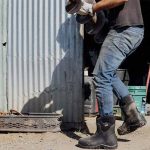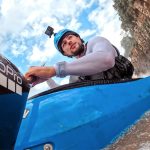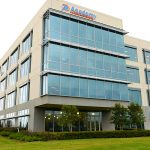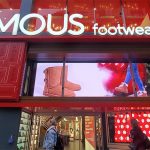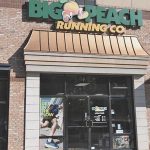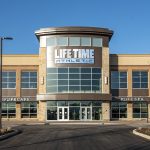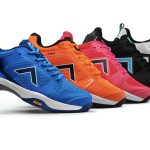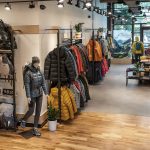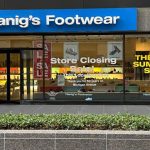Deckers Outdoor reported third-quarter earnings slid 23.2 percent to $33.1 million, or 95 cents a share due to sharply higher overhead expenses. However, results exceeded Deckers' July targets in part due to improved margins and the company lifted its outlook for the year.
Revenues increased 2.7 percent in the third quarter, to $386.7 million with modest gains from Ugg, Teva and Sanuk.
Ugg brand sales increased 1.3 percent to $337.0 million, primarily driven by higher global Direct-to-Consumer (DTC) sales, resulting from new store openings and the launch of new e-commerce websites, partially offset by lower domestic wholesale sales.
In terms of UGG wholesale, European UGG wholesale sales increased low-single digits, while Asia-Pacific was essentially flat. Domestic UGG wholesale was down high-single digits, which was in line with plan and reflects a shift in the mix of channel revenue to its DTC business, as well as the timing of fall holiday shipments to many accounts as a result of the past two mild starts to winter.
On a conference call with analysts, Chief Executive Angel Martinez said Ugg is starting to benefit from efforts take over the last few years to diversify globally and expand its product line, including more boots and casual shoes to suit warm seasons. He called Fall 2013’s collection, “the most diverse that we've ever developed,” with fashion boots and its slipper business particularly retailing well.
He said Ugg Pure, a textile made entirely from wool, “has had an immediate impact on enhancing our product line and will result in reduced costs going forward.” It’s being used in select linings and foot beds, replacing a portion of its table grade sheepskin, and will be expanded into new product categories.
“The benefits of UGG Pure will also extend beyond the brand's core footwear business into adjacent categories like home and allow us to target new consumers, particularly in China,” Martinez said.
Martinez also said Ugg will also continue to focus on opening more of the company’s own stores, with a focus on Asia, to ease its dependence on wholesale orders.
Teva brand sales increased 0.6 percent to $18.0 million as higher worldwide wholesale and DTC sales offset a decrease in international distributor sales.
Martinez said Teva’s fall offering “has performed well at retail.” Under the direction of a new brand president, Jeff Bua, Teva is being repositioned around its Originals line to better leverage the brand's authenticity and heritage to penetrate new casual footwear categories for both spring and fall. For spring '14 the expanded Originals line “has already generated strong prebook demand and new distribution wins, most notably all Nordstrom doors for men and select locations for women,” he said.
A new line of canvas casual footwear aimed at markets that remain warm year-round is also being introduced in 2014. Alternative upper fabrics such as corduroy and wax canvas will also be infused into select Teva fall and winter products next year in an effort to appeal to consumers in colder climates. Said Martinez, “We believe we have a sound long-term strategy in place to build the brand's presence both within and beyond the outdoor category.”
Sanuk brand sales inched up 0.5 percent to $18.4 million, driven primarily by gains in worldwide wholesale sales, as well as an increase in domestic DTC sales, offset by a decrease in distributor sales primarily in the Asia Pacific region, as well as in Canada.
Martinez said Sanuk saw strong sell-through of its expanded closed toe footwear for men, particularly in the department store channel. In women’s, Sanuk's yoga franchise “remains a very strong performer” with healthy post season reorders on the Yoga Sling in response to broad sell-out of the product at retail.
Spring 2014 will mark the first full Sanuk collection under Deckers' management, and the first full line under the direction of the brand's global director of product, Trisha Hegg. Sanuk plans to capitalize on strength in its women's sandal business with more key product in the yoga franchise, including some pull-forwards into spring from summer. A larger offering of trend-right canvas casuals with a potential broader appeal is also being rolled out.
Martinez said the early response to Spring has been strong from existing accounts like Nordstrom, Dillard's, Journeys and DSW, as well as planned expansion into the action sports channel, led by Zumiez, Tilly's, and Pac Sun. Said Martinez, “We believe that Sanuk is in a unique position to be one of the only handful of brands that can successfully thrive in such broad range of major retailers, a position we'll continue to successfully leverage in the years ahead.”
Combined sales of the company’s Other Brands (Tsubo, Ahnu, Mozo and Hoka One One) expanded 81.3 percent to $13.3 million, primarily attributable to the September 2012 acquisition of Hoka One One.
Overall, wholesale sales decreased 1.5 percent to $319 million. Retail sales increased 34.5 percent to $52.6 million, with same-store sales ahead 1.9 percent. The increase in comps was driven by high teens increase in China, a low double-digit increase in Japan, a low single digit increase in European comps, and partially offset by a low single digit decrease in US comps.
E-commerce sales advanced 12.2 percent to $14.9 million, driven primarily by strong international sales for Ugg, and the addition of new international e-commerce websites
Domestic sales decreased 1.4 percent to $238.8 million while international sales grew 10.3 percent to $147.9 million.
Gross margin improved 90 basis points to 43.2 percent, supported by a greater contribution coming from its DTC division.
Sheepskin costs in the fourth quarter will benefit from the reduction in prices negotiated in September 2012. For 2014, sheepskin cost per square foot will decrease approximately 10 percent compared to 2013 costs as the use of Ugg Pure will increase from about 10 percent of its total sheepskin usage in 2013 to approximately 25 percent next year. That’s expected to lead to approximately 100 basis point improvement in 2014 gross margins over projected 2013 levels. UGG Pure will not be used to replace its premium twin face sheepskin, which represents more than half of its total annual sheepskin usage.
SG&A expenses were 31.1 percent of sales compared to 26.5 percent as a result of approximately $12.5 million of additional expense related to its retail operations, mostly for new stores. SG&A expenses were lower than previous guidance for the third quarter, due primarily to the timing of certain expenses, the majority of which will now take place in the fourth quarter. Inventories at Sept. 30 decreased 8.6 percent.
The bottom line in the latest quarter also benefited from a tax benefit of approximately $2 million related to a lower, non-recurring tax rate.
Based on results for the third quarter of 2013 which included the shift of certain SG&A expenses into the fourth quarter combined with current visibility, the company now expects fourth quarter EPS to increase approximately 32 percent, down from its previous projection of approximately 38 percent. Fourth quarter revenues are still expected to increase approximately 14.5 percent.
For the year with the above-plan Q3, Deckers now expects EPS to increase approximately 10 percent, up from its previous projection of approximately 8 percent. Full year revenues are projected to increase approximately 8 percent over 2012 levels.

